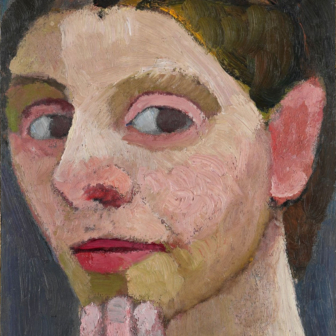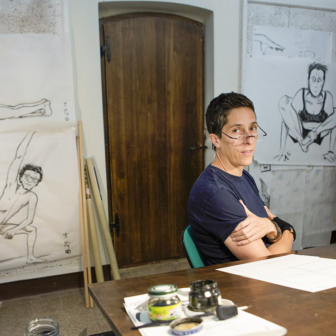The Convict Valley: The Bloody Struggle on Australia’s Early Frontier
By Mark Dunn | Allen and Unwin | $32.99 | 304 pages
The Convict Valley is essential reading for anyone seeking to understand the true history of the Hunter region’s colonisation. Mark Dunn, himself a descendant of convicts brought to the district in the 1820s, demonstrates a deep knowledge and understanding of this history. From the archives, he draws out and curates a rigorous and gripping narrative, taking the reader on a journey through the first half-century of the colonial process and showing how the invasion played out across its various stages. Dunn is a brilliant writer, and it is easy to get immersed in the stories of convicts plotting their escape and Aboriginal warriors clashing with cedar cutters along the Hunter River.
The scene is set with a snapshot of the Hunter’s natural landscape and its precolonial Aboriginal society. But the Aboriginal story isn’t relegated to the first chapter, and nor is it simply scattered here and there in a token way; the Hunter’s First People and their experience, gleaned with careful consideration from the colonisers’ own records, are threaded throughout.
Dunn points out how, “with a few notable exceptions,” Aboriginal people have been “confined to the first chapters of a book and then pushed aside by a story of triumphant expansionism and settler progress, stuck in a brutal past or ‘last of the tribe’ narrative.” I was surprised, though, to see no mention of Wonnarua historian James Miller’s book Koori: A Will to Win in Dunn’s appraisal of other texts about the region; much of the content of the first five chapters of Miller’s seminal work, first published in 1985, overlaps with the period Dunn is examining.
The Convict Valley is more proof of the importance of localised studies of Australian colonialism and Aboriginal–settler relations on the frontier. It has acquainted me with the country (to an extent) and the early decades of the region’s multilayered post-Cook history. It explores the emergence of the industries — logging, mining and farming — that came to lay waste to once-pristine lands and waters, and to devastate the Hunter Valley’s ancient Aboriginal communities.
The character of the country seems to have profoundly influenced the rollout of the colonial project region by region, including the patterns of contact and conflict with Aboriginal people. For some time in the Hunter, “[t]he mountains, steep valleys and surrounding bush remained as Aboriginal space” while “the valley floor, the creeks and rivers were increasingly becoming common ground, the space where most interactions between Aboriginal people and settlers were taking place.”
Dunn makes excellent use of colonists’ diary entries and letters about their journeys across country, fleshing out how the British reconnaissance parties interacted with their Aboriginal guides and the local people they encountered along the way. While much about these interactions goes unexplained in the archive, Dunn attempts to shed light on them by canvassing the cultural contexts that may have been at play; his inferences are perceptive and well reasoned, providing the reader with much food for thought about the complex nature of Aboriginal–settler relations at the time.
The highlighting of apparently amicable frontier relations between Aboriginal people and the coloniser (convict, free settler, police or otherwise) can have the effect of glossing over the true nature of the colonial process. Dunn rightly acknowledges the reality that exchanges, however superficially friendly, were “rarely on equal terms”:
Governors, missionaries and some settlers all believed in the civilising effects that work could have on Aboriginal people… To survive, many [Aboriginal people] had to adopt new ways and learn a foreign language, all the while facing the almost overwhelming numbers of British settlers and their stock invading the country around them. Despite a reliance on Aboriginal skill, knowledge and bushcraft, many colonists increasingly considered Aboriginal people to be inferior and dangerous, fostering a growing inequality that meant Aboriginal people were excluded from the very economy they had helped to establish.
I’d go even further and suggest that such exchanges were never on equal terms, simply because they took place in the course of a belligerent colonial invasion and occupation.
By incorporating and analysing Aboriginal place names, Dunn pays homage to the Hunter’s first languages. He also discusses the “form of hybridised English and Aboriginal language” that colonists and Aboriginal people used to communicate, given that very few Whites bothered to learn a local tongue. He offers a passage from a letter, written by settler Helenus Scott of Glendon to his mother Augusta in 1827, as an example of this “lingua franca.” The passage contains several examples of what Scott refers to as “Anglo-Black lingo”:
[W]e say “you bring it me badoo & me give it you ripo & mite, bell me gammon” which means “you bring me water (a bucket of) & I will give you a water melon & a cob of corn, I will not deceive you”… [The Aboriginal worker] might answer in the same Anglo-Black lingo “How many you give it me bulla carbon fellow? Bugeree you! Where sit down bucket?”; [meaning] how many will you give me? Two large ones? Very good. Where is the bucket?
This immediately reminded me of the language used by Aboriginal labourers on Ollera Station near the New England town of Guyra, snippets of which were recorded in the correspondence of the Everett brothers. In a letter to his brother William in 1840, for instance, George Everett wrote of how he led a heavily armed posse in pursuit of a flock of sheep allegedly seized by a band of Aboriginal warriors on the neighbouring Tilbuster run. As a tracker, they took with them an Aboriginal man, “Williams,” who worked and resided at Ollera. Everett explained that Williams came to realise his own brother may have been among those they were pursuing: “[Williams] came up to me with a sorrowful face and said ‘Baal shoot Johnny belonging to me’ of which elegant language he asked for his brother’s life.”
As well as being an example of the lingua franca discussed by Dunn, Everett’s words and the situation he describes serve as an emphatic illustration of the profoundly unequal relationships between colonists and Aboriginal people on the pastoral frontier, and of the racist derision with which Whites often regarded those they were dispossessing and dominating.
Having delved deep into my own ancestors’ history during the early decades of the colonial occupation on the New England Tableland, I found the stories of resistance and survival in Dunn’s book to be familiar in many respects: bands of Aboriginal warriors raiding settlers’ estates, the killing of convict labourers and livestock and, of course, the violence meted out in response by vigilante colonists, police and soldiers. The descriptions of the kinds of savagery perpetrated against local Aboriginal people in the chapter aptly titled “A Landscape of Violence” conjure up vivid and haunting images as you read, sufficient to make the blood boil and the stomach sick:
[A] man was taken during the pursuit of those involved in the spearing of Bowman’s stockman. This man was brought into Bowman’s hut, where a rope was secured around his neck. He was then marched a mile into the surrounding bush, forced to climb a nearby tree and tie the rope to a branch. The troopers then proceeded to fire their muskets at him, wounding him twice before he fell and was left hanging in the tree.
As they did elsewhere, the mounted police waged a campaign of terror against the Hunter’s tribes, which included massacres and summary executions. Dunn tells of how, in 1827, Lieutenant Nathaniel Lowe of the mounted police was the first military official to be charged over an Aboriginal person’s murder. The outcome was predictable: “It took the jury just five minutes to find Lowe not guilty.” Eerily familiar? Consider that no police or prison officer has yet been convicted in relation to the more than 430 deaths of Aboriginal people in custody since the Royal Commission into Aboriginal Deaths in Custody concluded in 1991.
Aboriginal people from the Hunter Region will read The Convict Valley through a lens somewhat different from my own. It talks of their country and their ancestors’ struggle; it is harrowing in parts, but also likely to instil a sense of great pride in their people’s sheer resilience. Descendants of the convicts, free settlers and penal station commandants will read it through a different lens again, and probably with other sorts of emotional responses.
The Convict Valley is yet another vital addition to the growing body of work helping to uncover and disseminate the true history of early colonial Australia. And if you weren’t aware of this history to any great extent, I’m confident that reading this book will change the way you see and experience the Hunter — its landscapes, its industries and its peoples. •




